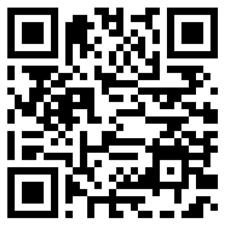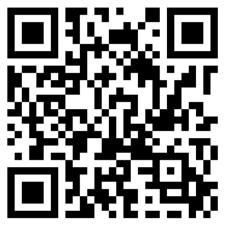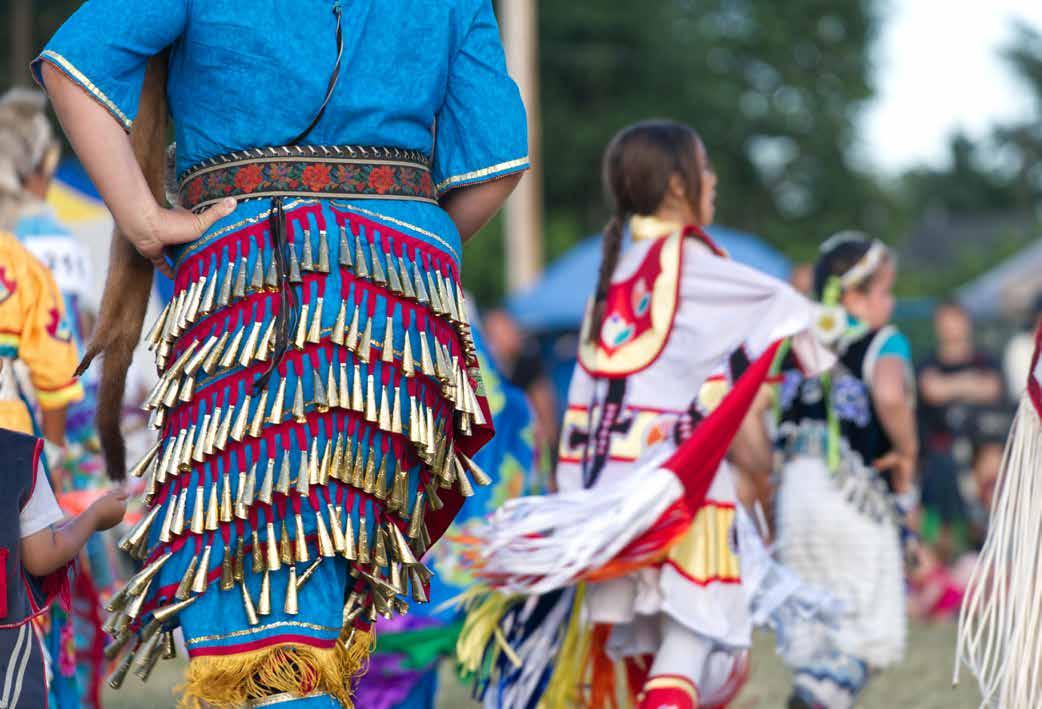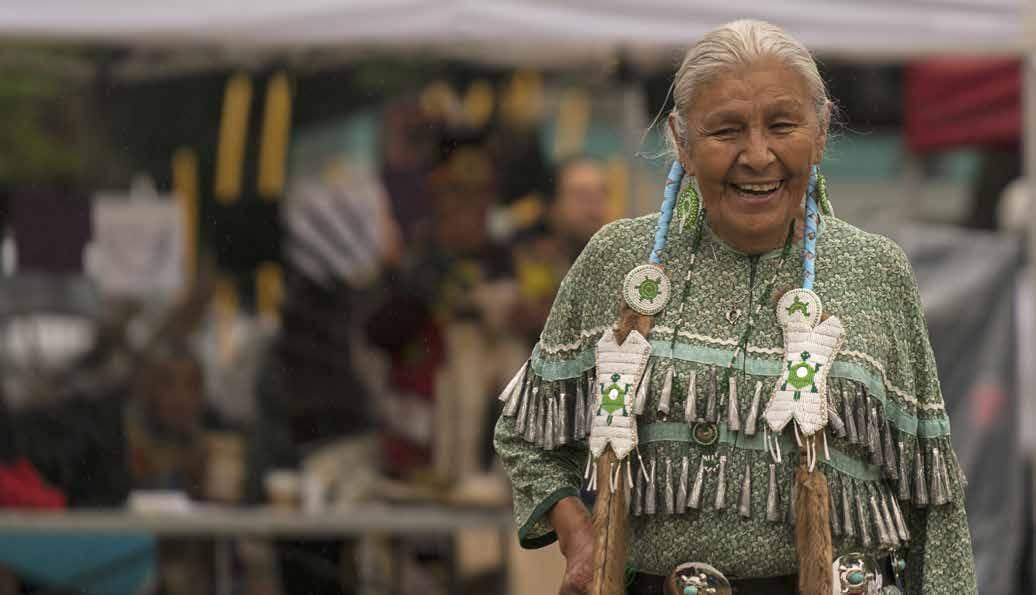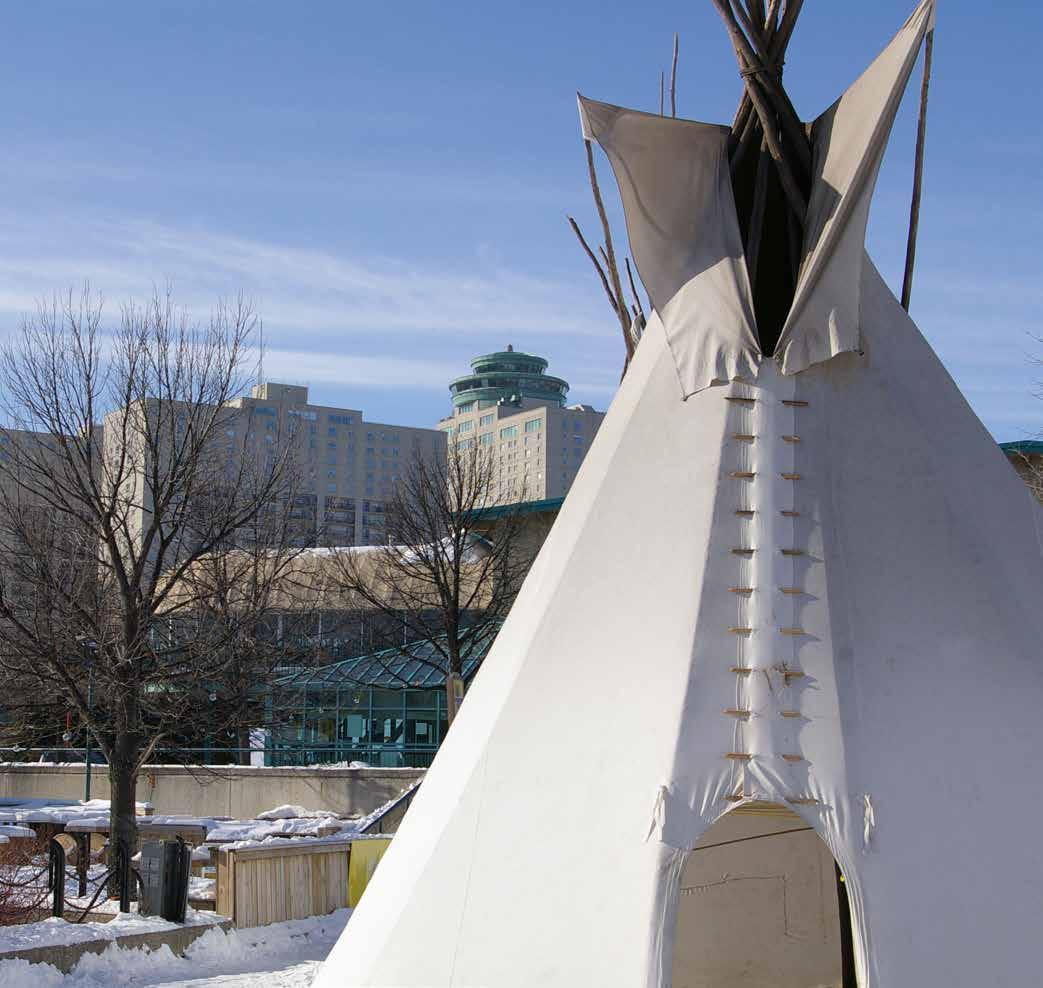KEY FINDINGS
Improving equitable access to culturally safe and relevant mental health and addictions services and supports for older urban Indigenous adults necessitates considerations of accessibility, availability, and acceptability. Accessibility of services is defined as people’s ability “to obtain the services when they need them” (Evans et al., 2013, p. 546), whereas availability refers to “the physical existence of health resources with sufficient capacity to produce services” (Levesque et al., 2013, p. 6). As stated above, older Indigenous adults residing in urban (off-reserve) population centres experience unique challenges in relation to mental health and addictions service accessibility and availability because of differences and discrepancies in funding and programs for First Nations, Inuit, and Métis peoples, jurisdictional complexities, and discriminatory organizational policies (NCCIH, 2019). Inequities in access are compounded by issues related to the acceptability of mental health and addictions services and supports, in other words, “people’s willingness to seek services” (Evans et al., 2013, p. 546). In relation to older Indigenous populations,
acceptability denotes the extent to which older Indigenous adults perceive services and service environments to be culturally safe and responsive to their needs, concerns, priorities, and contexts (Browne et al., 2016; Halseth et al., 2019). For many, the dominance of biomedical models of mental health care and a lack of trust, rooted in both historical (e.g., many older Indigenous adults are survivors of residential schools) and lived experiences of racism, stigma, and discrimination, act as key barriers to accessing mental health care services (Auger et al., 2016; Jervis, 2010; Ward et al., 2021).
Strategies and innovations for improving older Indigenous Peoples’ access to equityoriented mental health and addictions services and supports
Cultural safety, trauma- and violence-informed care, and contextually tailored care constitute key dimensions of equity-oriented care (Browne et al., 2012; Browne et al.,
2016; Ford-Gilboe et al., 2018). Growing evidence demonstrates that equity-oriented health care delivered by primary health care clinics is effective in improving access and wellness outcomes in populations affected by health and social inequities (Browne et al., 2016; Ford-Gilboe et al., 2018; Horrill et al., 2022).
Figure 1 provides a schematic overview of the key dimensions of equity-oriented health care in relation to mental health and addictions care for older Indigenous adults. Contextuallytailored approaches require that mental health and addictions services are responsive to local needs, priorities, and the contexts of demographic trends of older Indigenous populations and the communities they live in. Culturally safe practices are respectful of Indigenous knowledge(s) and healing systems. They deconstruct power imbalances inherent within health care by addressing the effects of historical and ongoing colonialism, anti-Indigenous racism, and discrimination (Auger et al., 2016; Browne et al., 2016, Curtis et al., 2019; Halseth et al., 2019). Applying the principle of trauma- and violence-informed
Improving equitable access to culturally safe and relevant mental health and addictions services and supports for older urban Indigenous adults necessitates considerations of accessibility, availability, and acceptability.
care (Browne et al., 2015) to the delivery of mental health and addictions services and supports means considering the multiple sources of trauma and violence in the lives of older Indigenous adults and the ways in which
© Credit: iStockPhoto.com, ID 1131495030
they impact on mental health and care experiences. This includes the ongoing effects of historic and intergenerational trauma and structural violence. Trauma- and violence-informed approaches would therefore
emphasize the need for strengthsbased responses that support older Indigenous adults’ selfdetermination and address the social determinants of their health.
FIGURE 1. EQUITY-ORIENTED MENTAL HEALTH AND ADDICTIONS CARE FOR OLDER INDIGENOUS ADULTS. ADAPTED FROM BROWNE ET AL. (2015).
• Builds upon the concept of patient-centred care
• Tailors care, programs and services to address the contexts of Indigenous older adults’ lives (e.g., cultural, social, gender and demographic contexts)
• Recognizes the effects of multiple forms of trauma and violence on Indigenous older adults’ experiences of mental health and wellness
• Accounts for the linkages that exist between trauma, violence, mental health and substance abuse issues
• Seeks to address inequitable power relationships, racism and discrimination in mental health and addictions care
• Creates access to Indigenous approaches to mental health and healing
Urban Indigenous-led community-directed mental wellness services and supports
Evidence shows that Indigenousled partnerships with local Indigenous community-controlled organizations improve both access to services and service utilization, and, as a result, wellness outcomes for Indigenous Peoples (Allen et al., 2020; Auger et al., 2016; Campbell et al., 2018; Efimoff et al., 2021; Gottlieb, 2013; Gross et al., 2016; Lavoie et al., 2018; O’Neil et al., 2016). Indigenous community engagement in, and the resulting sense of ownership over, health care services has been found to improve not only the accessibility and utilization of services but also responsiveness and continuity of care (Baba et al., 2014; Bath & Wakerman, 2015; Campbell et al., 2018; Davy et al., 2016; Gross et al., 2016; Harfield et al., 2015; Johnston et al., 2013; Lavoie, 2013; Lavoie et al., 2007; Lavoie et al., 2010; Maar, 2004; Tenbensel et al., 2014; Venugopal et al., 2021). For urban Indigenous (off-reserve) communities, access to Indigenous-led, community-directed mental health and addiction services can be improved through the development of Indigenous-led health care partnerships with urban Indigenous communitybased service organizations such as Friendship Centres and Indigenous health centres and

clinics (Browne et al., 2012; Browne et al., 2016; Campbell et al., 2018; Lavoie et al., 2018).
Because of their communitybased governance structure and explicit commitment to meet the needs of the communities they serve, urban Indigenous community-based service organizations are uniquely positioned to tailor services to the distinct priorities of their respective communities, as well as to identify and respond quickly to new and emerging population needs and contexts (BCAAFC, 2020; Lavoie et al., 2018), such as those of a growing urban Indigenous population of older adults. These organizations also foster community acceptance and trust (Browne et al., 2016; Campbell et al., 2018; Maar, 2004; Maar et al., 2009; Maar & Shawande, 2010), and they increase health care-seeking
behaviour among Indigenous populations by offering welcoming spaces that celebrate Indigenous culture(s) (Baba et al., 2014; Campbell et al., 2018). What is more, by grounding their approach to service delivery in Indigenous culture(s) and ways of knowing, and by employing a high percentage of Indigenous frontline staff – including Elders and Knowledge Keepers – these organizations successfully mitigate the ongoing impacts of colonial health care and racism (Schill et al., 2019). Their success is evidenced in the findings of the Urban Aboriginal Peoples Study, which indicated that in 2010, more than half of Indigenous Peoples living in urban centres in Canada reported utilizing local Indigenous services and organizations (Environics Institute, 2010). Of these, older Indigenous adults living in urban areas were particularly likely
© Credit: iStockPhoto.com, ID 1280968278
to access and utilize services provided by Indigenous agencies.
Qualitative studies exploring Indigenous Peoples’ experiences of health care supply further support for this finding. In these studies, Indigenous people cited a culturally appropriate model of care, trust, and relationships with staff and an Indigenous health care setting to be key factors in making Indigenous community-directed services more accessible (Campbell et al., 2018; Ward et al., 2021). However, Indigenous community-based organizations, especially those serving urban Indigenous populations, face considerable challenges that constrain their capacity to ensure the accessibility, availability, and acceptability of services. A lack of core funding, the widespread use of short-term and competitive funding arrangements, and highly prescriptive accountability frameworks make it difficult to recruit and retain experienced qualified staff. They also limit opportunities for communityled and long-term program planning and, by extension, the local tailoring of programs and service environments (Josewski et al., 2021).
“How can we … use the resources to work more efficiently? And maybe we can find a way of working that is more effective. … There’s still discrimination … within the system … historical issues from
the past … and I think it’s all created by … the funding system … [I]t’s caused from … everybody fighting for the same pots [of money].” (Elder and mental health provider with an Indigenous-led organization)
Traditional Indigenous healing and wellness approaches
A growing body of evidence shows that approaches informed by Indigenous healing practices and Indigenous knowledge are another important strategy for promoting access to equityoriented mental health and addictions services and supports for older Indigenous adults (Allen et al., 2020; Browne et al., 2016; Graham et al., 2021; Lewis & Myhra, 2017; Maar, 2004; Maar et al., 2009; Maar & Shawande, 2010; Rowan et al., 2014; Tu et al., 2019; Ward et al., 2021).
In addition to improvements in mental health and addictions outcomes (Tu et al., 2019), research shows that where such service models are implemented, clients report very high levels of satisfaction and cultural safety, as well as improved access to a continuum of care (Browne et al., 2016; Campbell et al., 2018; Maar, 2004; Maar & Shawande, 2010; Maar et al., 2009; Yeung, 2016). While not all Indigenous people choose traditional healing approaches, a growing number of Indigenous people, specifically Elders (Brooks-Cleator & Giles,
2016; Collings, 2001; Schill et al., 2019; Tonkin et al., 2018; Ward et al., 2021) want more access to traditional healing and culturally relevant services (Allen et al., 2020; Campbell et al., 2018; Graham et al., 2021). Compared to younger generations, older Indigenous adults are also more likely to follow traditions (Brooks-Cleator & Giles, 2016). Based on the findings of the Urban Aboriginal Peoples Study, nearly three quarter of older Indigenous adults living in urban areas consider access to traditional approaches to health care as or more important than access to Western health services (Environics Institute, 2010).
The use and/or integration of traditional wellness approaches can be supported locally through a collaborative service model and partnerships with Traditional Healers, Knowledge Keepers, Elders, and Indigenous agencies (Allen et al., 2020; Browne et al., 2016; Maar et al., 2009; Maar & Shawande, 2010). Elders, Knowledge Keepers, and Traditional Healers play vital roles in designing and delivering culturally safe care that integrates culture and Indigenous healing practices into mental health and addictions services (Allen et al., 2020; Browne et al., 2016; Graham et al., 2021; Maar & Shawande, 2010; Tu et al., 2019); yet, their contributions are often not adequately recognized, as funding dedicated to Elders’ services and cultural resources
remains problematically lacking (Josewski et al., 2021; Wise Practices Research Group, 2018).
“They want us to work in a culturally appropriate way with the clients so it will be right in the contract but in some contracts, like our addictions contract, it doesn’t have extra money built in for elder honorariums or paying part of the spiritual advisor’s salary; it’s just two counselors.” (Mental health provider with an Indigenous-led organization)
Community-based, integrated, comprehensive, and collaborative models of mental health and addictions care
Community-based, integrated, comprehensive, and collaborative care “emphasizes inter-professional collaboration as the bedrock for improving access, an expanded menu of services, and delivery of more appropriate mental health and substance use care” (Jeffries et al., n.d., p. ii). Evidence suggests that integrated, comprehensive, and collaborative models of community-based care can improve the accessibility of mental health and addictions services – especially for people who live with multiple chronic health conditions – by overcoming service siloes, improving coordination of care, and reducing stigma (BCAAFC, 2020; Browne et al., 2009; Browne et al., 2012; Browne

et al., 2016; Landry et al., 2019; Lewis et al., 2017; Maar, 2004; Maar et al., 2009; Maar & Shawande, 2010; Place, 2012). While research in this area as it relates to Indigenous populations is scarcer, studies suggest that integrated and collaborative care, when designed and delivered in partnership with urban Indigenous communities, Traditional Healers, and Elders, can be effective for improving access, cultural safety, and continuity of care for Indigenous populations (Browne et al., 2012; Browne et al., 2016; Campbell et al., 2018; Lewis et al., 2017). Conceptually, integrated, comprehensive, and collaborative models of care fit well with Indigenous Peoples’ views on mental health and addictions issues (BCAAFC, 2020; Josewski, 2012; Josewski et al., 2021; Maar, 2004; Maar et al., 2009; Maar & Shawande, 2010; Ontario Local Health Integration Network, 2011).
Indigenous views tend to emphasize the need for wholistic
approaches to mental health and addictions that directly respond to the social determinants of Indigenous health, such as “intergenerational trauma, poverty, unemployment and lack of housing that occur alongside the consequent mental health issues” (Smye & Mussell, 2001, p. 24). In line with this perspective, many urban Indigenous communitybased organizations engage in integrated and comprehensive care planning to increase access to services and supports that address the connections that exist between mental health, trauma, substance use, the cultural foundations for healing, and the wider social and historical contexts of Indigenous Peoples’ lives (BCAAFC, 2020; Browne et al., 2016; Josewski, 2020).
However, short-term, competitive, and inflexible funding arrangements create structural barriers to delivering integrated, comprehensive, and collaborative mental health and addictions services (Josewski, 2020). They
also create unintentional harms, such as potentially generating retraumatizing situations by routinely disrupting relationships of care (Josewski, 2020). Highly fragmented and jurisdictionally complex funding and policy environments have produced a maze of community-based services that are difficult for older Indigenous adults to navigate and access, and that create unnecessary administrative burdens for Indigenous organizations that are working to offer wholistic mental health and addictions services by piecing together single contracts (Josewski et al., 2021).
“We have to have four contracts pieced together to have a counseling program ...”. (Mental Health Program Director with an Indigenous-led organization)
Telemental health
Telemental health is the use of communications technology to facilitate access to and delivery of mental health and addictions services and supports (Jeffries et al., n.d.). Research demonstrates that telemental health is cost-effective, improves
access to care, and enhances care experiences for a wide variety of populations, including rural and remote communities and older adults (Egede et al., 2018; Hilty et al., 2013; Langarizadeh et al., 2017). However, research in Indigenous settings is scarce, and there is little evidence to guide a rapid shift to telemental health and substance use services for older Indigenous adults (Goodwill et al., 2021). This is particularly the case with respect to ensuring cultural safety and addressing the social inequities that limit many Indigenous people’s access to and use of communications technology (Jones et al., 2017). For example, findings from the 2017 Aboriginal Peoples Survey show that many older Indigenous adults (42.4%) in Canada do not use the internet, especially those who reside in the North and who report a strong cultural identity (Ali-Hassan et al., 2020).
In addition to concerns about cultural safety in telehealth services (Jones et al., 2017), many Indigenous people, especially those living in more rural and Northern areas, do not have reliable access to the internet and/ or information communication
technologies, and if they do, they might experience technical difficulties using certain types of technology (Ali-Hassan et al., 2020; Toth et al., 2018). Access may, however, be enhanced in situations where telemental health services are provided in culturally safe and supportive environments in collaboration with Indigenous community-based organizations and providers (Caffery et al., 2018), and when they are developed with Indigenous leadership and input (Jones et al., 2017; Povey et al., 2016). Overall, while increased access to and use of information communication technologies by Indigenous communities may help to provide greater access to mental health and addictions services and supports for older Indigenous adults, more work is needed to better understand the perspectives and experiences of older Indigenous adults and Elders using telehealth technology for mental health services and supports.
“I think Indigenous people want to be … innovative … innovative in the way they do things because they’re imagining a new way of being”. (Elder and Indigenous policy stakeholder) 17
REFERENCES
Abraham, S. G., Tauranga, M., & Moore, D. (2018). Adult Māori patients’ healthcare experiences of the emergency department in a district health facility in New Zealand. International Journal of Indigenous Health, 13(1), 87-103.
Ali-Hassan, H., Eloulabi, R., & Keethakumar, A. (2020). Internet non-use among Canadian Indigenous older adults: Aboriginal Peoples Survey (APS). BMC Public Health, 20(1), 1-10.
Allan, B., & Smylie, D. (2015). First Peoples, second class treatment: The role of racism in the health and well-being of Indigenous peoples in Canada. Wellesley Institute & WellLiving House.
Allen, L., Hatala, A., Ijaz, S., Courchene, E. D., Bushie, E. B. (2020). Indigenous-led health care partnerships in Canada. Canadian Medical Association Journal, 192(9), E208-E216.
Arriagada, P., Hahmann, T., & O’Donnell, V. (2020). Indigenous people and mental health during the COVID-19 pandemic. Statistics Canada.
Assembly of First Nations (AFN), & Health Canada. (2015). First Nations mental wellness continuum framework. https:// thunderbirdpf.org/wp-content/uploads/2015/01/24-141273-FN-Mental-Wellness-Framework-EN05_low.pdf
Atkinson, D. (2017). Considerations for Indigenous child and youth population mental health promotion in Canada. National Collaborating Centres for Public Health.
Auger, M., Howell, T., & Gomes, T. (2016). Moving toward holistic wellness, empowerment and self-determination for Indigenous peoples in Canada: Can traditional Indigenous health care practices increase ownership over health and health care decisions? Canadian Journal of Public Health, 107(4), e393-e398.
Baba, J. T., Brolan, C. E., & Hill, P. S. (2014). Aboriginal medical services cure more than illness: A qualitative study of how Indigenous services address the health impacts of discrimination in Brisbane communities. International Journal for Equity in Health, 13(1), 1-10.
Bath, J., & Wakerman, J. (2015). Impact of community participation in primary health care: What is the evidence? Australian Journal of Primary Health, 21(1), 2-8.
Bombay, A., Matheson, K., & Anisman, H. (2014). The intergenerational effects of Indian Residential Schools: Implications for the concept of historical trauma. Transcultural psychiatry, 51(3), 320-338.
British Columbia Association of Aboriginal Friendship Centres [BCAAFC]. (2020). Urban Indigenous wellness report: A BC Friendship Centre perspective. https://bcaafc.com/wp-content/ uploads/2020/11/BCAAFC-Urban-Indigenous-WellnessReport.pdf
British Columbia (BC) Ministry of Mental Health and Addictions. (2019). A pathway to hope: A roadmap for making mental health and addictions care better for people in British Columbia. Government of British Columbia. https://www2. gov.bc.ca/assets/gov/british-columbians-our-governments/ initiatives-plans-strategies/mental-health-and-addictionsstrategy/bcmentalhealthroadmap_2019web-5.pdf
Brooks-Cleator, L. A., & Giles, A. R. (2016). Culturally relevant physical activity through Elders in Motion: Physical activity programming for older Aboriginal adults in the Northwest Territories, Canada. Journal of Cross-Cultural Gerontology, 31(4), 449-470.
Browne, A. J., McDonald, H., & Elliott, D. (2009). First Nations urban Aboriginal health research discussion paper. First Nations Centre, National Aboriginal Health Organization.
Browne, A. J., Smye, V. L., Rodney, P., Tang, S. Y., Mussell, B., & O’Neil, J. (2011). Access to primary care from the perspective of Aboriginal patients at an urban emergency department. Qualitative Health Research, 21(3), 333-348.
Browne, A. J., Varcoe, C., Ford-Gilboe, M., Wathen, C. N. (2015). EQUIP Healthcare: An overview of a multicomponent intervention to enhance equity-oriented care in primary health care settings. International Journal for Equity in Health, 14(1), 152.
Browne, A. J., Varcoe, C., Lavoie, J., Smye, V., Wong, S. T., Krause, M., Tu, D., Godwin, O., Khan, K., & Fridkin, A. (2016). Enhancing health care equity with Indigenous populations: evidence-based strategies from an ethnographic study. BMC Health Services Research, 16(1), 544.
Browne, A. J., Varcoe, C. M., Wong, S. T., Smye, V. L., Lavoie, J., Littlejohn, D., Tu, D., Godwin, O., Krause, M., Khan, K. B., Fridkin, A., Rodney, P., O’Neil, J., & Lennox, S. (2012). Closing the health equity gap: evidence-based strategies for primary health care organizations. International journal for equity in health, 11, 59.
Caffery, L. J., Bradford, N. K., Smith, A. C., & Langbecker, D. (2018). How telehealth facilitates the provision of culturally appropriate healthcare for Indigenous Australians. Journal of Telemedicine and Telecare, 24(10), 676-682.
Campbell, M. A., Hunt, J., Scrimgeour, D. J., Davey, M., & Jones, V. (2018). Contribution of Aboriginal CommunityControlled Health Services to improving Aboriginal health: An evidence review. Australian Health Review, 42(2), 218-226.
Canadian Mental Health Association, Ontario. (2010). Mental health and addictions issues for older adults: Opening the doors to a strategic framework. https://ontario.cmha.ca/wp-content/ uploads/2010/03/cmha_ontario_issues_for_older_adults_ full_report_201003.pdf
Collings, P. (2001). “If you got everything, it’s good enough’”: Perspectives on successful aging in a Canadian Inuit community. Journal of Cross-Cultural Gerontology, 16(2), 127-155.
Congress of Aboriginal Peoples. (2019). Urban Indigenous people: Not just passing through. http://www.abo-peoples.org/ wp-content/uploads/2019/09/Urban-Indigenous-ReportFINAL.pdf
Corrado, R. R., & Cohen, I. M. (2003). Mental health profiles for a sample of British Columbia’s survivors of the Canadian Residential School system. Aboriginal Healing Foundation.
Curtis, E., Jones, R., Tipene-Leach, D., Walker, C., Loring, B., Paine, S.-J., & Reid, P. (2019). Why cultural safety rather than cultural competency is required to achieve health equity: A literature review and recommended definition. International Journal for Equity in Health, 18(1), 1-17.
Davy, C., Harfield, S., McArthur, A., Munn, Z., & Brown, A. (2016). Access to primary health care services for Indigenous peoples: A framework synthesis. International Journal of Equity in Health, 15(1), 163.
Dwyer, J., Boulton, A., Lavoie, J. G., Tenbensel, T., & Cumming, J. (2014). Indigenous Peoples’ health care: New approaches to contracting and accountability at the public administration frontier. Public Management Review, 16(8), 1091-1112.
Dwyer, J. M., Lavoie, J., O’Donnell, K., Marlina, U., & Sullivan, P. (2011). Contracting for Indigenous health care: Towards mutual accountability. Australian Journal of Public Administration, 70(1), 34-46.
Efimoff, I., Patrick, L., Josewski, V., Gross, P., Lambert, S., & Smye, V. (2021). The power of connections: How a novel Canadian men’s wellness program is improving the health and well-being of Indigenous and non-Indigenous men. International Indigenous Policy Journal, 12(2), 1-22.
Egede, L. E., Dismuke, C. E., Walker, R. J., Acierno, R., & Frueh, B. C. (2018). Cost-effectiveness of behavioral activation for depression in older adult veterans: In-person care versus telehealth. The Journal of Clinical Psychiatry, 79(5).
Elias, B., Mignone, J., Hall, M., Hong, S. P., Hart, L., & Sareen, J. (2012). Trauma and suicide behaviour histories among a Canadian Indigenous population: An empirical exploration of the potential role of Canada’s residential school system. Social science & Medicine, 74(10), 1560-1569.
Environics Institute. (2010). Urban Aboriginal Peoples study: Main report. https://www.uaps.ca/wp-content/ uploads/2010/04/UAPS-FULL-REPORT.pdf
Evans, D. B., Hsu, J., & Boerma, T. (2013). Universal health coverage and universal access. Bulletin of the World Health Organization, 91, 546-546A.
Firestone, M., Syrette, J., Jourdain, T., Recollet, V., & Smylie, J. (2019). “I feel safe just coming here because there are other Native brothers and sisters”: Findings from a communitybased evaluation of the Niiwin Wendaanimak Four Winds Wellness Program. Canadian Journal of Public Health, 110(4), 404-413.
First Nations Health Authority (FNHA). (2019). FNHA’s policy on mental health and wellness. https://www.fnha.ca/ WellnessSite/WellnessDocuments/FNHA-Policy-on-MentalHealth-and-Wellness.pdf
First Nations Health Authority (FNHA), Ministry of Health British Columbia, & Health Canada. (2013). A path forward: BC First Nations and Aboriginal People’s mental wellness and substance use - 10 year plan. https://www.suicideinfo.ca/wpcontent/uploads/2013/09/A-path-forward-BC-First-Nationsand-Aboriginal-peoples-mental-wellness-and-substance-use10-year-plan.pdf
Ford-Gilboe, M., Wathen, C. N., Varcoe, C., Herbert, C., Jackson, B. E., Lavoie, J. G., Paul, B. B., Perrin, N. A., Smye, V., Wallace, B., Wong, S. T., & Brown, A.J. for the Equip Research Program. (2018). How equity-oriented health care affects health: Key mechanisms and implications for primary health care practice and policy. The Milbank Quarterly, 96(4), 635-671.
Goodwill, A., & Morgan, J. (2021). Knowledge synthesis: COVID-19 in mental health and substance use. CIHR IRSC Executive Summary Report.
Gottlieb, K. (2013). The Nuka System of care: Improving health through ownership and relationships. International Journal of Circumpolar Health, 72(1), 21118.
Government of British Columbia. (2021). BC budget: Protecting the health and safety of British Columbians. https:// www.bcbudget.gov.bc.ca/2021/protecting-health.htm
Government of Canada. (1982). Constitution Act, 1982 https://caid.ca/ConstAct010208.pdf
Graham, S., Stelkia, K., Wieman, C., & Adams, E. (2021). Mental health interventions for First Nations, Inuit, and Métis peoples in Canada: A systematic review. The International Indigenous Policy Journal, 12(2), 1-33.
Greenwood, M., de Leeuw, S., Lindsay, N. M., & Reading, C. (eds.). (2015). Determinants of Indigenous Peoples’ health in Canada: Beyond the social. Canadian Scholars’ Press.
Gross, P. A., Efimoff, I., Patrick, L., Josewski, V., Hau, K., Lambert, S., & Smye, V. (2016). The DUDES Club: A brotherhood for men’s health. Canadian Family Physician, 62(6), e311-e318.
Habjan, S., Prince, H., & Kelley, M. L. (2012).Caregiving for elders in First Nations communities: Social system perspective on barriers and challenges. Canadian Journal on Aging, 31(2), 209-222.
Halseth, R., & Murdock, L. (2020). Supporting Indigenous selfdetermination in health: Lessons learned from a review of best practices in health governance in Canada and internationally. National Collaborating Centre for Indigenous Health.
Halseth, R., Stout, R., & Atkinson, D. (2019). Cultural safety. Oxford Bibliographies.
Harfield, S., Davy, C., Kite, E., McArthur, A., Munn, Z., Brown, N., & Brown, A. (2015). Characteristics of Indigenous primary health care models of service delivery: a scoping review protocol. JBI Database of Systematic Reviews and Implementation Reports, 13(11), 43-51.
Hill, D. M. (2003) Traditional medicine in contemporary contexts: Protecting and respecting Indigenous Knowledge and medicine. National Aboriginal Health Organization.
Hillier, S., & Al-Shammaa, H. (2020). Indigenous Peoples’ experiences with aging: A systematic literature review. Canadian Journal of Disability Studies, 9(4), 146-179.
Hilty, D. M., Ferrer, D. C., Parish, M. B., Johnston, B., Callahan, E. J., & Yellowlees, P. M. (2013). The effectiveness of telemental health: A 2013 review. Telemedicine and e-Health, 19(6), 444-454.
Horrill, T. C., Browne, A. J., Stajduhar, K. I. (2022). Equityoriented healthcare: What it is and why we need it in oncology. Current Oncology, 29(1), 186-192.
Indigenous Services Canada [ISC]. (2021). Indigenous health care in Canada. Government of Canada. https://www.sac-isc. gc.ca/eng/1626810177053/1626810219482
Jeffries, V., Slaunwhite, A., Wallace, N., Menear, M., Arndt, J., Dotchin, J., GermAnn, K., & Sapergia, S. (n.d.). Collaborative care for mental health and substance use issues in primary health care: Overview of reviews and narrative summaries. Mental Health Commission of Canada.
Jervis, L. L. (2010). Aging, health, and the indigenous people of North America. Journal of Cross Cultural Gerontology, 25, 299-301.
Johnston, J. M., Smith, J. J., Hiratsuka, V. Y., Dillard, D. A., Szafran, Q. N., & Driscoll, D. L. (2013). Tribal implementation of a patient-centred medical home model in Alaska accompanied by decreased hospital use. International Journal of Circumpolar Health, 72(1), 20960.
Jones, L., Jacklin, K., & O’Connell, M. E. (2017). Development and use of health-related technologies in indigenous communities: Critical review. Journal of Medical Internet Research, 19(7), e256.
Josewski, V. (2012). Analysing ‘cultural safety’ in mental health policy reform: Lessons from British Columbia, Canada. Critical Public Health, 22(2), 223-234.
Josewski, V. (2020). Moving towards cultural safety in mental health and addictions contracting for urban Indigenous Peoples: Lessons from British Columbia [Unpublished PhD dissertation] Simon Fraser University.
Josewski, V., Morrow, M., Smye, V., Lavoie, J., O’Neil, J., & Mussell, W. (2021). Applying a critical policy lens to contracting in Indigenous mental health. International Indigenous Policy Journal (under review).
Kurtz, D. L., Nyberg, J. C., Van Den Tillaart, S., Mills, B., & The Okanagan Urban Aboriginal Health Research Collective. (2008). Silencing of voice: An act of structural violenceurban Aboriginal women speak out about their experiences with health care. International Journal of Indigenous Health, 4(1), 53-63.
Landry, V., Asselin, H., & Lévesque, C. (2019). Link to the land and mino-pimatisiwin (comprehensive health) of Indigenous people living in urban areas in eastern Canada. International Journal of Environmental Research and Public Health, 16(23), 4782.
Langarizadeh, M., Tabatabaei, M. S., Tavakol, K., Naghipour, M., Rostami, A., & Moghbeli, F. (2017). Telemental health care, an effective alternative to conventional mental care: A systematic review. Acta Informatica Medica, 25(4), 240.
Lavoie, J. G. (2013). Policy silences: Why Canada needs a National First Nations, Inuit and Métis health policy. International Journal of Circumpolar Health, 72(1), 22690.
Lavoie, J. G., Forget, E., & O’Neil, J. D. (2007). Why equity in financing First Nations on-reserve health services matters: Findings from the 2005 national evaluation of the health transfer policy. Healthcare Policy, 2(4), 79.
Lavoie, J. G., Forget, E. L., Prakash, T., Dahl, M., Martens, P., & O’Neil, J. D. (2010). Have investments in on-reserve health services and initiatives promoting community control improved First Nations’ health in Manitoba? Social Science & Medicine, 71(4), 717-724.
Lavoie, J. G., Varcoe, C., Wathen, C. N., Ford-Gilboe, M., Browne, A. J., & Team ER. (2018). Sentinels of inequity: Examining policy requirements for equity-oriented primary healthcare. BMC Health Services Research, 18(1), 705-705.
Levesque, J.-F., Harris, M. F., & Russell. G. (2013). Patientcentred access to health care: Conceptualising access at the interface of health systems and populations. International Journal for Equity in Health, 12(1), 1-9.
Lewis, M. E., & Myhra, L. L. (2017). Integrated care with Indigenous populations: A systematic review of the literature. American Indian & Alaska Native Mental Health Research, 24(3), 88-110.
Liberal Party of Canada. (2021). Improving mental health care across Canada. https://liberal.ca/wp-content/uploads/ sites/292/2021/08/Improving-Mental-Health-Care-acrossCanada.pdf
Maar, M. (2004). Clearing the path for community health empowerment: Integrating health care services at an Aboriginal health access centre in rural north central Ontario. International Journal of Indigenous Health, 1(1), 54-64.
Maar, M. A., Erskine, B., McGregor, L., Larose, T. L., Sutherland, M. E., Graham, D., Shawande, M., & Gordon, T. (2009). Innovations on a shoestring: A study of a collaborative community-based Aboriginal mental health service model in rural Canada. International Journal of Mental Health Systems, 3(1), 1-12.
Maar, M. A, & Shawande, M. (2010). Traditional Anishinabe healing in a clinical setting: The development of an Aboriginal interdisciplinary approach to community-based Aboriginal mental health care. International Journal of Indigenous Health, 6(1), 18-27.
Manitoba Keewatinowi Okimakanak Inc. (MKO) (2019). Non-insured mental health benefits. Traditional Healer gathering report 2019: Community is medicine https://mkonation.com/mko/wp-content/uploads/ TraditionalHealersReport_web.pdf
Mashford-Pringle, A., Skura, C., Stutz, S., & Yohathasan, T. (2021). What we heard: Indigenous Peoples and COVID-19: Supplementary report for the Chief Public Health Officer of Canada’s report on the state of public health in Canada. Public Health Agency of Canada.
Mental Health Commission of Canada. (2017). Strengthening the case for investing in Canada’s mental health system: Economic considerations. https://www. mentalhealthcommission.ca/wp-content/uploads/ drupal/2017-03/case_for_investment_eng.pdf
Moroz, N., Moroz, I., & Slovinec D’Angelo, M. (2020). Mental health services in Canada: Barriers and cost-effective solutions to increase access. Healthcare Management, 33(6), 282-87.
Mussell, B. (2014). Mental health from an Indigenous perspective. In P. Menzies & L. Lavallee (Eds.), Journey to healing: Aboriginal people with addiction and mental health issues (pp. 187-200). Centre for Addiction and Mental Health.
National Association of Friendship Centres [NAFC]. (2020). Submission to the Special Rapporteur on Indigenous Rights: Canada’s response to COVID 19 and urban Indigenous communities: Perspectives from the Friendship Centre movement.
National Collaborating Centre for Indigenous Health [NCCIH]. (2019). Access to health services as a social determinant of First Nations, Inuit and Metis Health. https://www.nccih.ca/docs/determinants/FSAccessHealthServicesSDOH-2019-EN.pdf
National Inquiry on Missing and Murdered Indigenous Women and Girls. (2019). Reclaiming power and place: The final report of the National Inquiry into Missing and Murdered Indigenous Women and Girls. https://www.mmiwg-ffada.ca/ wp-content/uploads/2019/06/Final_Report_Vol_1a-1.pdf
O’Donnell, V., Wendt, M., & National Asssociation of Friendship Centres. (2017). Aboriginal Peoples Survey, 2012: Aboriginal seniors in population centres in Canada. Statistics Canada.
O’Neil, J., Gallagher, J., Wylie, L., Bingham, B., Lavoie, J., Alcock, D., & Johnson, H. (2016). Transforming First Nations’ health governance in British Columbia. International Journal of Health Governance, 21(4), 229-244.
Ontario Local Health Integration Network. (2011). NE LHIN Aboriginal/First Nations Métis mental health and addictions framework
Place, J. (2012). The health of Aboriginal people residing in urban areas. National Collaborating Centre for Aboriginal Health.
Pomeroy, A. (2007). Changing the culture of contracting: funding for outcomes. Social Policy Journal of New Zealand, 31, 158.
Press, J. (2017). Aging Aboriginals pose new fiscal, social challenge for government: census. The Canadian Press, October 25.
Povey, J., Mills, P. P. J. R., Dingwall, K. M., Lowell, A., Singer, J., Rotumah, D., Bennett-Levy, J., & Nagel, T. (2016). Acceptability of mental health apps for Aboriginal and Torres Strait Islander Australians: A qualitative study. Journal of Medical Internet Research, 18(3), e5314.
Rowan, M., Poole, N., Shea, B., Gone, J. P., Mykota, D., Farag, M., Hopkins, C., Hall, L., Mushquash,C., & Dell, C. (2014). Cultural interventions to treat addictions in Indigenous populations: findings from a scoping study. Substance Abuse Treatment, Prevention, and Policy, 9(1), 1-27.
Royal Commission on Aboriginal Peoples (RCAP). (1996). People to people and nation to nation: Highlights from the report of Royal Commission on Aboriginal Peoples. Government of Canada.
Schill, K., Terbasket, E., Thurston, W. E., Kurtz, D., Page, S., McLean, F., Jim, R., & Oelke, N. (2019). Everything is related and it all leads up to my mental well-being: A qualitative study of the determinants of mental wellness amongst urban indigenous elders. The British Journal of Social Work, 49(4), 860-879.
Smye, V., & Browne, A. J. (2002). ‘Cultural safety’ and the analysis of health policy affecting Aboriginal people. Nurse Researcher, 9(3), 42-56.
Smye, V., Browne, A., Varcoe, C., & Josewski, V. (2011). Harm reduction, methadone maintenance treatment and the root causes of health and social inequities: An intersectional lens in the Canadian context. Harm Reduction Journal, 8(1), 17.
Smye, V., & Mussell, B. (2001). Aboriginal mental health: “What works best” - A discussion paper. Mental Health Evaluation & Community Consultation Unit.
Smye, V., Varcoe, C., Browne, A. J., Dion Stout, M., Josewski, V., Ford-Gilboe, M., & Keith, B. (2020). Violence at the intersections of women’s lives in an urban context: Indigenous women’s experiences of leaving and/or staying with an abusive partner. Violence Against Women, 27(0), 1586-1607
Snyder, M., Wilson, K., & Whitford, J. (2015). Examining the urban Aboriginal policy gap: Impacts on service delivery for mobile urban Aboriginal Peoples in Winnipeg, Canada. Aboriginal Policy Studies, 5(1), 1-2.
Solar, A., & Irwin, A. (2010. A conceptual framework for action on the social determinants of health. Social determinants of health discussion paper 2 (Policy and Practice). World Health Organization.
Tenbensel, T., Dwyer, J., & Lavoie, J. (2014). How not to kill the golden goose: Reconceptualizing accountability environments of third-sector organizations. Public Management Review, 16(7), 925-944.
Tonkin, R., Freeman, S., Martin, J., Ward, V., & Skinner, K. (2018). First Nations Elders’ perspectives of engagement in community programs in Nak’azdli Whut’en, British Columbia, Canada. Canadian Journal of Public Health, 109(5), 717-725.
Toth, K., Smith, D., & Giroux, D. (2018). Indigenous peoples and empowerment via technology. First Peoples Child & Family Review, 13(1), 21-33.
Trevethan, S. (2019). Strengthening the availability of First Nations data. Indigenous Services Canada & Assembly of First Nations.
Tu, D., Hadjipavlou, G., Dehoney, J., Price, Elder R., Dusdal, C., Browne, A. J., & Varcoe, C. (2019). Partnering with Indigenous Elders in primary care improves mental health outcomes of inner-city Indigenous patients: Prospective cohort study. Canadian Family Physician, 65(4), 274-281.
Truth and Reconciliation Commission (TRC) of Canada. (2015a). Honouring the truth, reconciling for the future: Summary of the final report of the Truth and Reconciliation Commission of Canada. https://irsi.ubc.ca/sites/default/files/ inline-files/Executive_Summary_English_Web.pdf
Truth and Reconciliation Commission (TRC) of Canada (2015b). Truth and Reconciliation Commission of Canada: Calls to action. https://www2.gov.bc.ca/assets/gov/britishcolumbians-our-governments/indigenous-people/aboriginalpeoples-documents/calls_to_action_english2.pdf
United Nations. (2007). United Nations Declaration on the Rights of Indigenous Peoples. https://www.un.org/ development/desa/indigenouspeoples/wp-content/uploads/ sites/19/2018/11/UNDRIP_E_web.pdf
Venugopal, J., Morton Ninomiya, M. E., Green, N. T., Peach, L., Linklater, R., Ningwakwwe George, P., & Wells, S. (2021). A scoping review of evaluated Indigenous community-based mental wellness initiatives. Rural and Remote Health, 21(1), 6203.
Viscogliosi, C., Asselin, H., Basile, S., Borwick, K., Couturier, Y., Drolet, M.-J., Gagnon, D., Obradovic, N., Torrie, J., Zhou, D., & Levasseur, M. (2020). Importance of Indigenous elders’ contributions to individual and community wellness: Results from a scoping review on social participation and intergenerational solidarity. Canadian Journal of Public Health, 111(5), 667-681.
Vukic, A., Gregory, D., Martin-Misener, R., & Etowa, J. (2011). Aboriginal and Western conceptions of mental health and illness. Pimatisiwin: A Journal of Aboriginal and Indigenous Community Health, 9(1), 65-86.
Walker, J. D. (2020). Aging and frailty in First Nations communities. Canadian Journal on Aging, 39(2), 133-144.
Ward, L. M, Hill, M. J., Picard, A., Harper, A. O., Chreim, S., & Wells, S. (2021). A process of healing for the Labrador Innu: Improving health and wellbeing in the context of historical and contemporary colonialism. Social Science & Medicine, 279, 113973.
Webkamigad, S., Rowe, R., Peltier, S., Chow, A. F., McGilton, K. S., & Walker, J. D. (2020). Identifying and understanding the health and social care needs of Indigenous older adults with multiple chronic conditions and their caregivers: A scoping review. BMC Geriatrics, 20(1), 1-19.
Wesley-Esquimaux, C., & Calliou, B. (2010). Best practices in Aboriginal community development: A literature review and wise practices approach. The Banff Centre.
Wilson, K., Rosenberg, M. W., & Abonyi, S. (2011). Aboriginal peoples, health and healing approaches: The effects of age and place on health. Social Science & Medicine, 72(3), 355-364.
Wise Practices Research Group. (2018). System-level change for life promotion. A https://wisepractices.ca/wp-content/ uploads/2018/10/WisePractices_SystemLevelChange_v13.pdf
Yeung, S. (2016). Conceptualizing cultural safety: Definitions and applications of safety in health care for Indigenous mothers in Canada. Journal for Social Thought, 1(1), 1-13.



